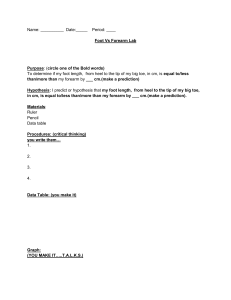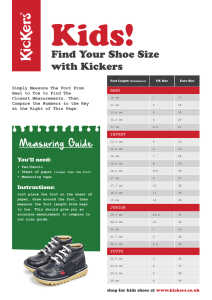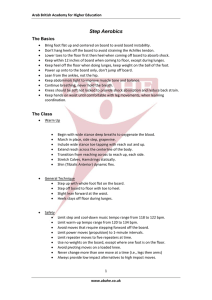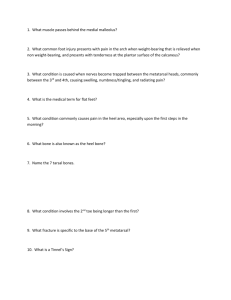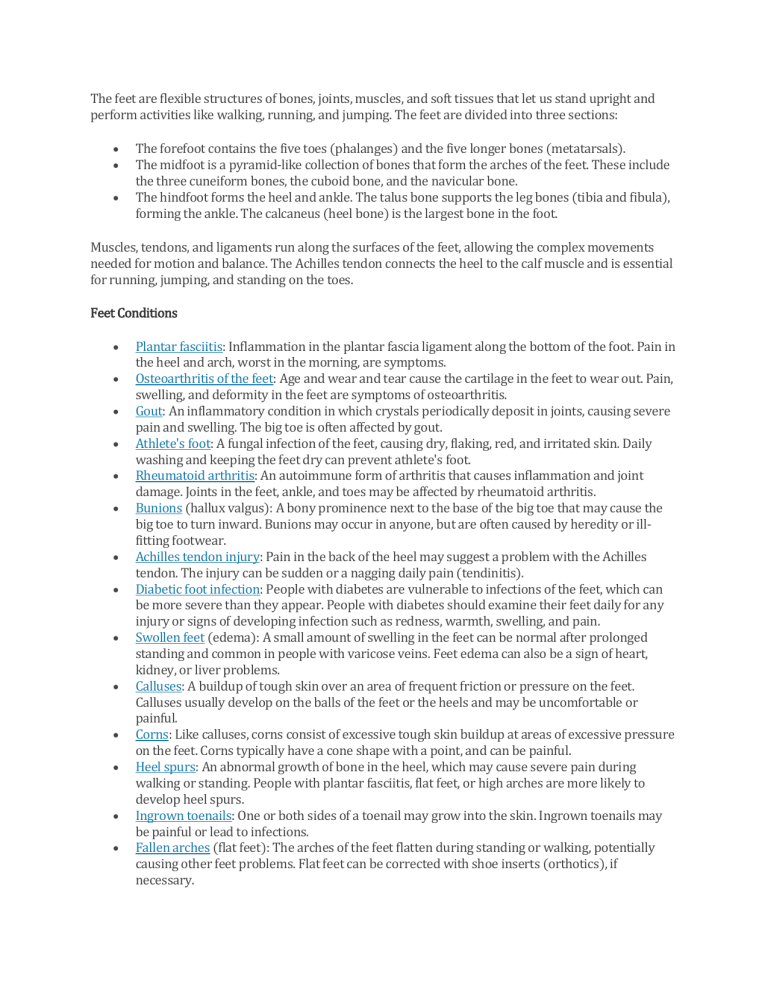
The feet are flexible structures of bones, joints, muscles, and soft tissues that let us stand upright and perform activities like walking, running, and jumping. The feet are divided into three sections: The forefoot contains the five toes (phalanges) and the five longer bones (metatarsals). The midfoot is a pyramid-like collection of bones that form the arches of the feet. These include the three cuneiform bones, the cuboid bone, and the navicular bone. The hindfoot forms the heel and ankle. The talus bone supports the leg bones (tibia and fibula), forming the ankle. The calcaneus (heel bone) is the largest bone in the foot. Muscles, tendons, and ligaments run along the surfaces of the feet, allowing the complex movements needed for motion and balance. The Achilles tendon connects the heel to the calf muscle and is essential for running, jumping, and standing on the toes. Feet Conditions Plantar fasciitis: Inflammation in the plantar fascia ligament along the bottom of the foot. Pain in the heel and arch, worst in the morning, are symptoms. Osteoarthritis of the feet: Age and wear and tear cause the cartilage in the feet to wear out. Pain, swelling, and deformity in the feet are symptoms of osteoarthritis. Gout: An inflammatory condition in which crystals periodically deposit in joints, causing severe pain and swelling. The big toe is often affected by gout. Athlete's foot: A fungal infection of the feet, causing dry, flaking, red, and irritated skin. Daily washing and keeping the feet dry can prevent athlete's foot. Rheumatoid arthritis: An autoimmune form of arthritis that causes inflammation and joint damage. Joints in the feet, ankle, and toes may be affected by rheumatoid arthritis. Bunions (hallux valgus): A bony prominence next to the base of the big toe that may cause the big toe to turn inward. Bunions may occur in anyone, but are often caused by heredity or illfitting footwear. Achilles tendon injury: Pain in the back of the heel may suggest a problem with the Achilles tendon. The injury can be sudden or a nagging daily pain (tendinitis). Diabetic foot infection: People with diabetes are vulnerable to infections of the feet, which can be more severe than they appear. People with diabetes should examine their feet daily for any injury or signs of developing infection such as redness, warmth, swelling, and pain. Swollen feet (edema): A small amount of swelling in the feet can be normal after prolonged standing and common in people with varicose veins. Feet edema can also be a sign of heart, kidney, or liver problems. Calluses: A buildup of tough skin over an area of frequent friction or pressure on the feet. Calluses usually develop on the balls of the feet or the heels and may be uncomfortable or painful. Corns: Like calluses, corns consist of excessive tough skin buildup at areas of excessive pressure on the feet. Corns typically have a cone shape with a point, and can be painful. Heel spurs: An abnormal growth of bone in the heel, which may cause severe pain during walking or standing. People with plantar fasciitis, flat feet, or high arches are more likely to develop heel spurs. Ingrown toenails: One or both sides of a toenail may grow into the skin. Ingrown toenails may be painful or lead to infections. Fallen arches (flat feet): The arches of the feet flatten during standing or walking, potentially causing other feet problems. Flat feet can be corrected with shoe inserts (orthotics), if necessary. Nail fungal infection (onychomycosis): Fungus creates discoloration or a crumbling texture in the fingernails or toenails. Nail infections can be difficult to treat. Mallet toes: The joint in the middle of a toe may become unable to straighten, causing the toe to point down. Irritation and other feet problems may develop without special footwear to accommodate the mallet toe. Metatarsalgia: Pain and inflammation in the ball of the foot. Strenuous activity or ill-fitting shoes are the usual causes. Claw toes: Abnormal contraction of the toe joints, causing a claw-like appearance. Claw toe can be painful and usually requires a change in footwear. Fracture: The metatarsal bones are the most frequently broken bones in the feet, either from injury or repetitive use. Pain, swelling, redness, and bruising may be signs of a fracture. Plantar wart: A viral infection in the sole of the foot that can form a callus with a central dark spot. Plantar warts can be painful and difficult to treat. Morton's neuroma: A growth consisting of nerve tissue often between the third and fourth toes. A neuroma may cause pain, numbness, and burning and often improves with a change in footwear. SUGGESTED Feet Tests Physical exam: A doctor may look for swelling, deformity, pain, discoloration, or skin changes to help diagnose a foot problem. Feet X-ray: A plain X-ray film of the feet can detect fractures or damage from arthritis. Magnetic resonance imaging (MRI scan): An MRI scanner uses a high-powered magnet and a computer to construct detailed images of the foot and ankle. Computed tomography (CT scan): A CT scanner takes multiple X-rays, and a computer constructs detailed images of the foot and ankle. Feet Treatments Orthotics: Inserts worn in the shoes can improve many foot problems. Orthotics may be custommade or standard-sized. Physical therapy: A variety of exercises can improve flexibility, strength, and support of the feet and ankles. Feet surgery: In some cases, fractures or other problems with the feet require surgical repair. Pain medicines: Over-the-counter or prescription pain relievers such as acetaminophen (Tylenol), ibuprofen (Motrin), and naproxen (Aleve) can treat most foot pain. Antibiotics: Bacterial infections of the feet may require antibacterial drugs given orally or intravenously. Antifungal medicines: Athlete's foot and other fungal infections of the feet can be treated with topical or oral antifungal medicines. Cortisone injection: An injection of a steroid may be helpful in reducing pain and swelling in certain foot problems.
